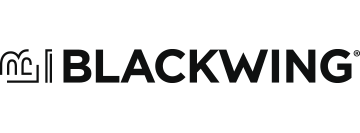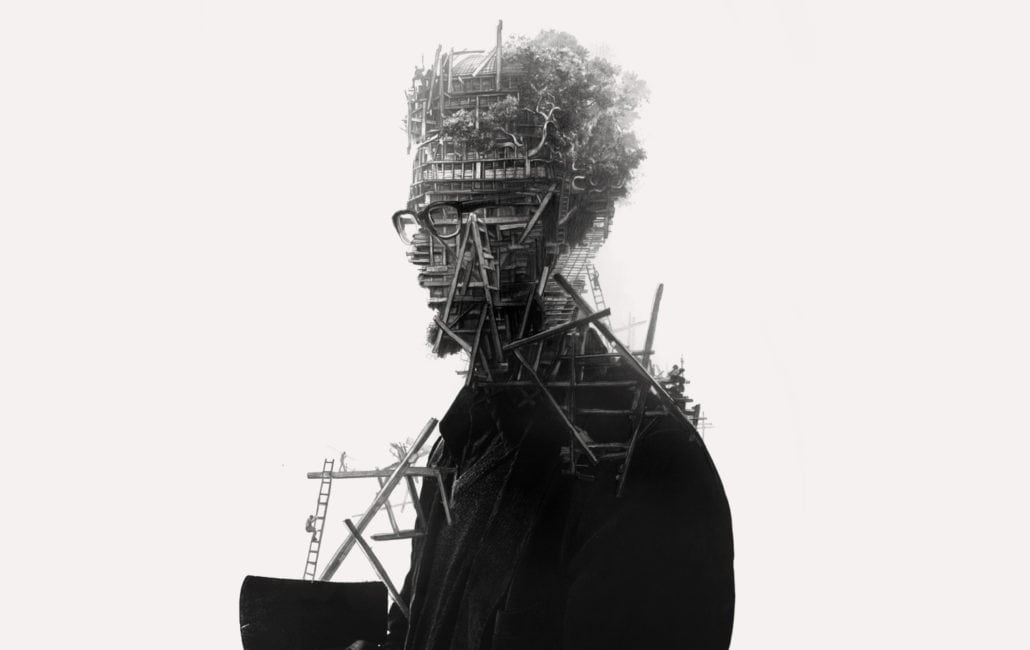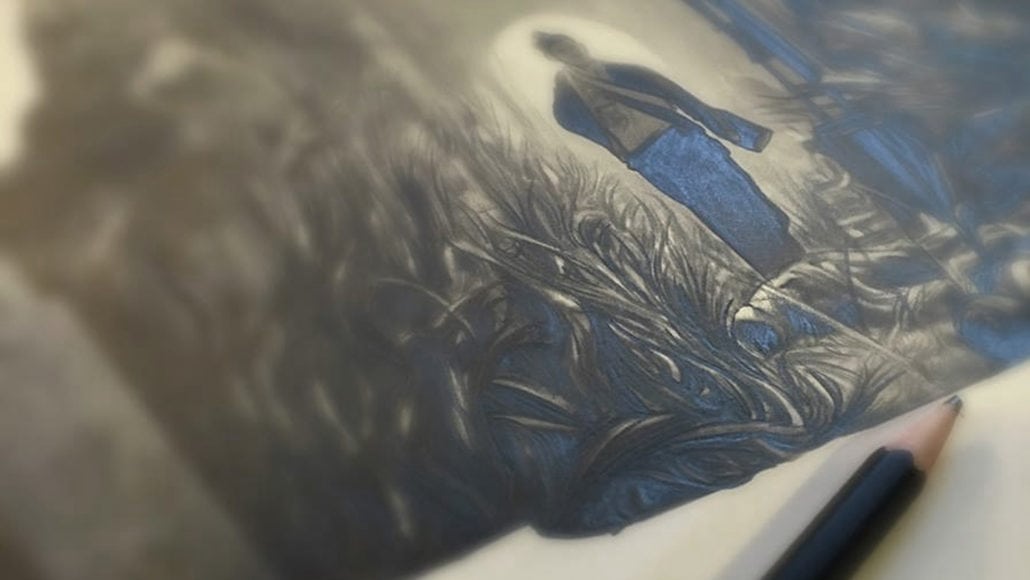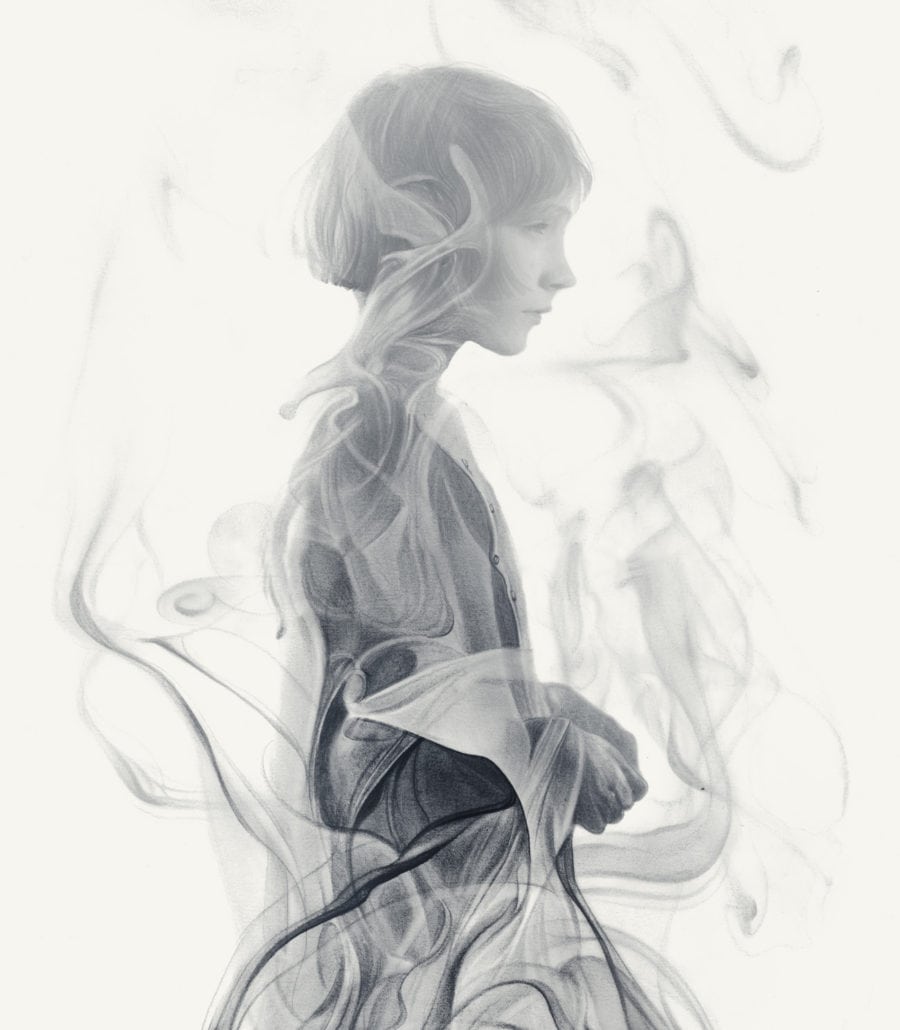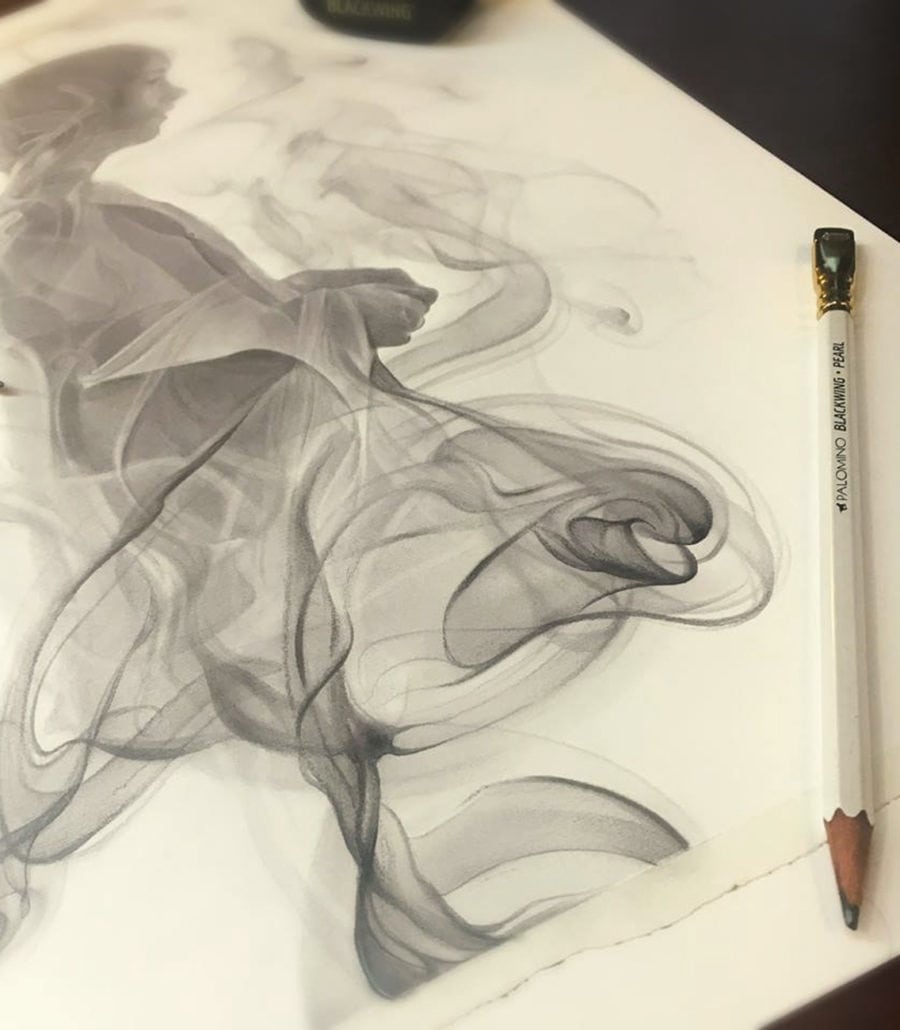Name: Greg Ruth
Pencil Hand: right
Craft: Writer/Artist of graphic novels, children’s picture books, illustration and film.
Brand: N/A
Location: Ashfield, Massachusetts
“…you can’t beat hand drawn work, and the responsiveness – the ability to get the hands dirty and smudge and wrestle with the happy accidents that come from real world art making.”
THE PROCESS
What do you do?
I am a career professional writer and artist. I got my start in and through comics back in 1993 and have been going since then with countless book covers for Harper Collins, Abrams Books, Simon and Schuster, Scholastic Books, Can, Slate, the NY Times, Penguin, Random House and on… a half dozen children’s picture books to my name such as Coming Home, Rolling Thunder, Old Turtle: Questions of the Heart, A Pirate’s Guide to First Grade/Recess, and Red Kite Blue Kite. I’ve done two music video for Prince and Rob Thomas, respectively, as well as the graphic novels Sudden Gravity, Freaks of the Heartland, Conan: Born on the Battlefield, The Lost Boy, and Indeh with Ethan Hawke, as well as our newest project, Meadowlark. Basically I write and draw each and every day.
What does your work space look like? Where do you like to create?
I work in a separate building next to my house- it’s an old Victorian place built by the town doctor here in Ashfield, and as such there’s an unattached apothecary building at the end of the driveway. Up in its loft I have set up a private workplace where I squirrel away, leaving the downstairs an open gallery/showroom space for the flat files, work tables, and my fellow artist and wife Jen Smith, who also displays and showcases her work. My studio is essentially a pitched roof interior with old stained wainscoting, surrounded by bookshelves with two big rose windows on either side. Totally private, accessible only through a stair and hatch so I can indulge my own hermit like tendencies.
What role does the pencil play in your process?
Up until about a year ago, almost nothing. But upon discovering the Blackwing, my entire work style has changed utterly. Up until this point my primary medium was sum ink and brush, but since the advent of the Blackwing, 602 and Pearl pencils, it has dramatically altered both the kind of work I do as well as its content.
Why do you choose to work with pencils and, specifically, Blackwings?
It was how they moved across the paper that really took hold for me. There’s a fluidity to the Blackwings I find deeply satisfying. They can achieve a single minuscule level of detail or be applied to generate vast swaths of tone and black. When applied heavily, as I do often, they take on a mirror like sheen I find really spectacular- it’s a quality impossible to catch in any reproduction process so it renders a special quality to the original drawings I find impossible to repeat
What other tools are essential to your process?
I’m pretty basic and practical with my approach to my work- primarily pencils and inks, some watercolor and colors pencil. I do use the computer- especially to help with the color work by scanning in swaths of hand made tones and washes- never computer based colors. I essentially use photoshop as a glorified paste-up machine, in particular when doing my comics work. But you can’t beat hand drawn work, and the responsiveness; the ability to get the hands dirty and smudge and wrestle with the happy accidents that come from real world art making. I have never found a match, so I don’t really draw digitally ever. It just lacks the tangibility that holding a real pencil in the hands has within it as a basic nature. It feels more connected, and real and something made to me.
How do you overcome ______ block? Writer’s block, artist’s block, etc.
Well I write and draw and paint so I run into this quite often. My way of working is to essentially normalize it as a routine. I wake up very early to get a jump on the day, around 5 am, and once the kids are off to school, pretty much work until around 5pm and supper needs pull me away. Keeping to a regular schedule like this has been the best and most effective anti-writer’s block tool. Being present everyday, even when it’s a slow day, makes me available to whatever muse might be required. And, since she knows where I’ll be, she tends to show up a lot more often.
I do tend to find working at a problem from different angles helps too – if I’m working on a piece, or writing a script, and hit a roadblock… I find watching a movie of a related theme, or going out for a bit and approaching the work from a different perspective often helps restart the engines. On days where it’s simply not there to be had, I will attend to the other more mundane tasks of the studio: mailing out commissioned work, or original art sales, posters and books, etc… It’s a way of being at work and accomplishing something without necessarily working creatively, and as a result the muse tends to arrive and I’m back in business.
What’s the best advice you’ve ever received?
Oh so much too much to codify into a single answer…
That fear is what can make art making exciting and progressive and should always be seen as an asset.
That every panel of a comic should tell us something new and grow the story/world/characters.
To listen to the characters in a story and let them tell you what they want and where they should go – I often will find when I’ve gone off map with a character’s actions they’ll sort of holler at me in my head, “I would never say that!” or “What are you thinking? I can’t drive a car!” and, as such, they keep me and the story honest.
That ultimately inspiration is the smallest portion of working creatively, and the rest is hard persistent and brave work, always working, never stopping.
To challenge assumptions and forge new paths and explore what new ways any tool, be it a pencil or brush, can do, and folding that new technique into the thematic side of the work.
The worst thing for any creative to do is rest upon one’s laurels.
To never mistake success for completion and failure for stopping.
The art life requires thinking forward, standing on the outside and pushing the edge of what’s normal or acceptable and, as Werner Herzog so aptly said, know it is the duty of an artist to experience everything, no matter how terrible beautiful trite or overwhelming.
